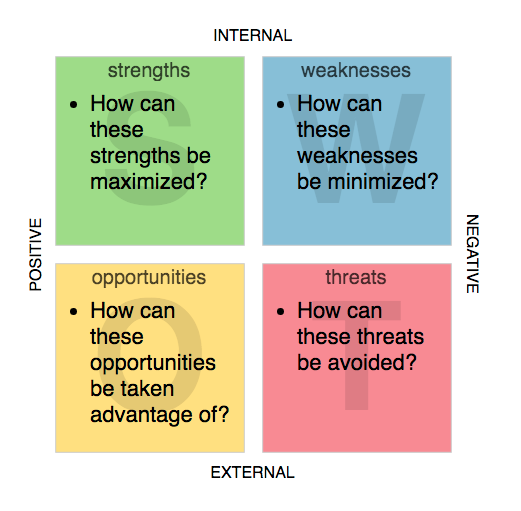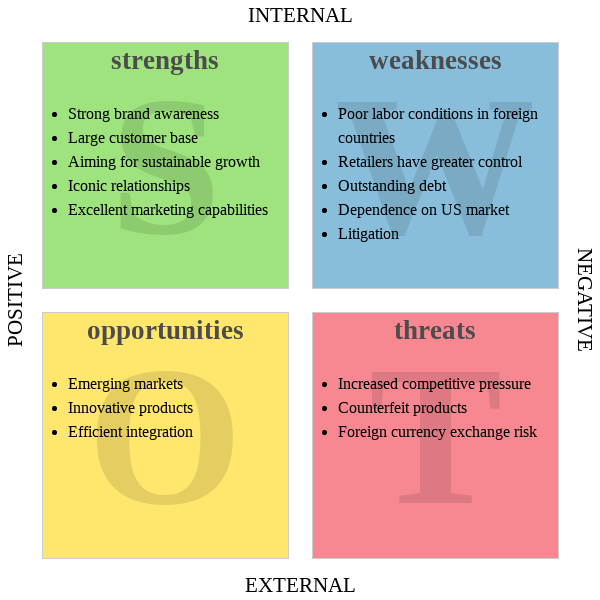What is SWOT Analysis?
SWOT consists of four aspects, starting with the first character of the word: ” Strengths”, “Weaknesses”, “Opportunities” and “Threats”, in short, it is a competitive situation assessment that identifies appropriate response strategies through internal and external industry environment analysis. It is often used for market analysis, new product promotion, marketing communication strategy and operational plan implementation, and can be used as a reference for strategy implementation to improve the efficiency of these plans.
SWOT is related to the insight of our own brand and industry trends, and these insights may use some data analysis tools, but basically there is no need to have the level of analysis tools in SWOT discussion.
It was proposed by Heinz Weihrich, a professor at the University of San Francisco, in a paper in 1982, when SWOT was transformed and applied, and the various matrices were combined and listed to come up with various strategy proposals.
How to draw a SWOT Matrix?
When conducting a SWOT discussion, it is necessary for all participants to present “objective statements” and for everyone to have a common understanding of the brand’s objectives in order to achieve more effective results.
- Strengths and weaknesses are related to the brand’s own products and services, focusing on the brand’s “internal” factors.
- Opportunities and threats are related to changes in key customer segments due to the environment, focusing on the “external” factors of the industry.

- Strengths: The characteristics of a business or project that put it at an advantage relative to other businesses or projects.
- Weaknesses: Characteristics that put the enterprise or project at a disadvantage relative to other enterprises or projects.
- Opportunities: factors in the external environment that the enterprise or project can use to its advantage.
- Threats: Factors in the external environment that may cause trouble for the enterprise or project.
SWOT Example: NIKE
You can find NIKE’s internal problems and external influences, but you can also know the internal development strengths and external market opportunities. Among them, you can find that some of NIKE’s operating strategies are easy to use. You can learn a thing or two from the SWOT example diagram below:

Edit this SWOT Analysis template
NIKE’S INTERNAL ADVANTAGE
- Consumers have strong brand recognition
- Accumulated a huge customer base
- Aim for sustainable development
- Iconic relationships (like the Air Jordan partnership)
- Excellent marketing ability of the team
NIKE’s Internal Disadvantages
- Poor labor conditions abroad
- Retailers have a lot of control (nearly 70% of the shares)
- Debt poses a financial threat
- Dependence on the US market
- Internal company lawsuits
External Opportunities for NIKE
- Emerging Market Expansion
- Innovative product development
- efficient integration
External Threats to NIKE
- increasing competitive pressure
- Counterfeit products abound
- Currency fluctuation risk
This post is also available in Deutsch, Español, فارسی, Français, Bahasa Indonesia, 日本語, Polski, Portuguese, Ру́сский, Việt Nam, 简体中文 and 繁體中文.













